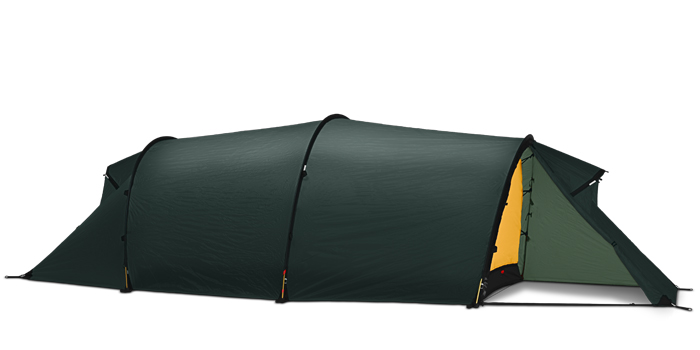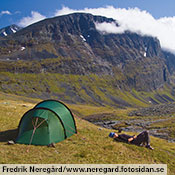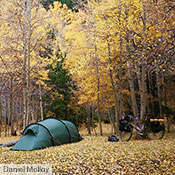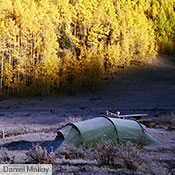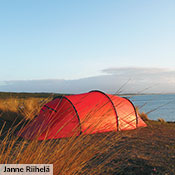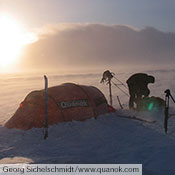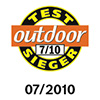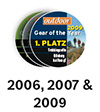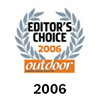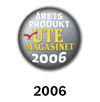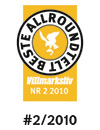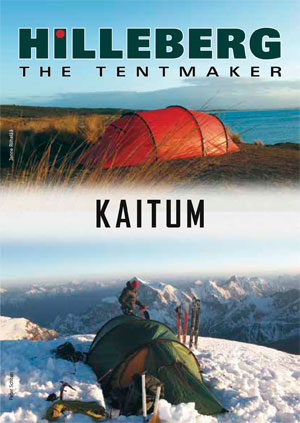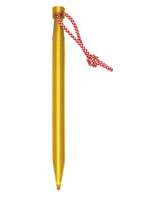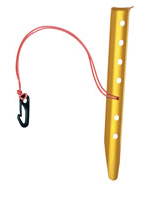Our Red Label models are true all-season tents, yet are still easily light enough for any backpacking trip. They are well-suited for nearly all users, and, unsurprisingly, they have become our most popular tents.
Before we organized our tents into the Label system – introduced in 2012 to make it easier for people to choose the right Hilleberg tent – our now-named “Red Label” models were simply called “Kerlon 1200 tents.” According to Bo Hilleberg, “The Kerlon 1200 tents were made at first for experienced backpackers who were out year ’round.” These tents were distinguished then – as Red Label tents are today – by their lighter weight, Kerlon 1200 outer tent fabric and 9 mm poles, in contrast to our Black Label models, which use stronger Kerlon 1800 in their outer tents and sturdier 10 mm poles.
Quite quickly, however, we discovered that these light yet remarkably strong Red Label tents were ideal for quite a large group of users. “Those just beginning to go into the backcountry get a tent that is reliable and offers great security for bad weather in the summer,” says Bo. “Experienced users often find them a lighter option for some of their trips. And they are quite good for families who are out in more challenging conditions.”
The first “Red Label” tent was the Nallo, introduced in 1987 as a response to those who wanted a 2-person tent similar to our Black Label Nammatj, only lighter. This led us on a quest both for new designs and a new fabric that would save even more weight without compromising our rigorous strength standards. That first Nallo spawned a collection – the Nallo 2, 3, and 4 and corresponding extended vestibule GT models – which then led to the newer design we use today. All of the subsequent Red Label tents evolved from that template: lighter fabrics, 9 mm poles, one vent up high, and often using different length poles – all to save weight without compromising true all-season strength.
Since the Nammatj to Nallo concept worked so well, we did the same with Staika to Allak, and then took it one step further and created a solo version, the Soulo. The Keron collection gave rise to the Kaitum models. The Saivo and Tarra were the inspiration for the Jannu. Both Akto and Unna, however, are “native” Red Label tents in that they were designed not to be Black Label counterparts, but to be exactly what they are: outstanding solo tents for those who go out in all seasons.
We know that the smaller Red Label tents – especially the Jannu and Soulo – are tremendously strong, and that leads some very experienced people to use them, quite successfully, for things which we don’t necessarily recommend Red Label tents. Eric Larsen took an Akto on his attempt to bicycle to the South Pole. Lonnie Dupre used a Soulo in the first winter solo ascent of Denali. And Alexander Barber continues to use the Soulo and Jannu in his solo climbs of the Himalayan 8000 m peaks. We do, however, advise against using Red Label tents for those doing sustained, multi-month journeys – round-the-world bicycle, motorcycle or trekking tours, for example. For these kinds of demanding adventures, we still recommend taking a stronger, more durable Black Label tent.
Such extreme usage aside, Red Label tents are ideal for those who find themselves out in all seasons and all weather, and who want an outstanding balance of light weight, strength, and overall comfort. For more on selecting the right tent for you, please see “Choosing the right Hilleberg tent."
Our Red Label models are true all-season tents, yet are still easily light enough for any backpacking trip. They are well-suited for nearly all users, and, unsurprisingly, they have become our most popular tents.
Before we organized our tents into the Label system – introduced in 2012 to make it easier for people to choose the right Hilleberg tent – our now-named “Red Label” models were simply called “Kerlon 1200 tents.” According to Bo Hilleberg, “The Kerlon 1200 tents were made at first for experienced backpackers who were out year ’round.” These tents were distinguished then – as Red Label tents are today – by their lighter weight, Kerlon 1200 outer tent fabric and 9 mm poles, in contrast to our Black Label models, which use stronger Kerlon 1800 in their outer tents and sturdier 10 mm poles.
Quite quickly, however, we discovered that these light yet remarkably strong Red Label tents were ideal for quite a large group of users. “Those just beginning to go into the backcountry get a tent that is reliable and offers great security for bad weather in the summer,” says Bo. “Experienced users often find them a lighter option for some of their trips. And they are quite good for families who are out in more challenging conditions.”
The first “Red Label” tent was the Nallo, introduced in 1987 as a response to those who wanted a 2-person tent similar to our Black Label Nammatj, only lighter. This led us on a quest both for new designs and a new fabric that would save even more weight without compromising our rigorous strength standards. That first Nallo spawned a collection – the Nallo 2, 3, and 4 and corresponding extended vestibule GT models – which then led to the newer design we use today. All of the subsequent Red Label tents evolved from that template: lighter fabrics, 9 mm poles, one vent up high, and often using different length poles – all to save weight without compromising true all-season strength.
Since the Nammatj to Nallo concept worked so well, we did the same with Staika to Allak, and then took it one step further and created a solo version, the Soulo. The Keron collection gave rise to the Kaitum models. The Saivo and Tarra were the inspiration for the Jannu. Both Akto and Unna, however, are “native” Red Label tents in that they were designed not to be Black Label counterparts, but to be exactly what they are: outstanding solo tents for those who go out in all seasons.
We know that the smaller Red Label tents – especially the Jannu and Soulo – are tremendously strong, and that leads some very experienced people to use them, quite successfully, for things which we don’t necessarily recommend Red Label tents. Eric Larsen took an Akto on his attempt to bicycle to the South Pole. Lonnie Dupre used a Soulo in the first winter solo ascent of Denali. And Alexander Barber continues to use the Soulo and Jannu in his solo climbs of the Himalayan 8000 m peaks. We do, however, advise against using Red Label tents for those doing sustained, multi-month journeys – round-the-world bicycle, motorcycle or trekking tours, for example. For these kinds of demanding adventures, we still recommend taking a stronger, more durable Black Label tent.
Such extreme usage aside, Red Label tents are ideal for those who find themselves out in all seasons and all weather, and who want an outstanding balance of light weight, strength, and overall comfort. For more on selecting the right tent for you, please see “Choosing the right Hilleberg tent."

 Cart
Cart






